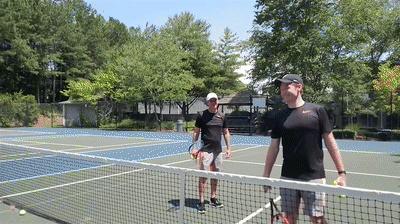Raul_SJ
G.O.A.T.

Smash down into the service box...The drill is supposed to promote acceleration. I do not see the benefit. The racquet path on a serve motion is mostly upwards. And you will never be hitting down on the top half of the ball.
While this drill may help with acceleration the downside outweighs the benefit.
IMO, this drill will mostly just promote hitting down into the net. The drill should more resemble an actual service motion.
Likewise, the corollary drill often used along with this smash down drill (serving over the fence on the fly) is also unrealistic. Although that drill has little more benefit than smashing down drill.
Last edited:
